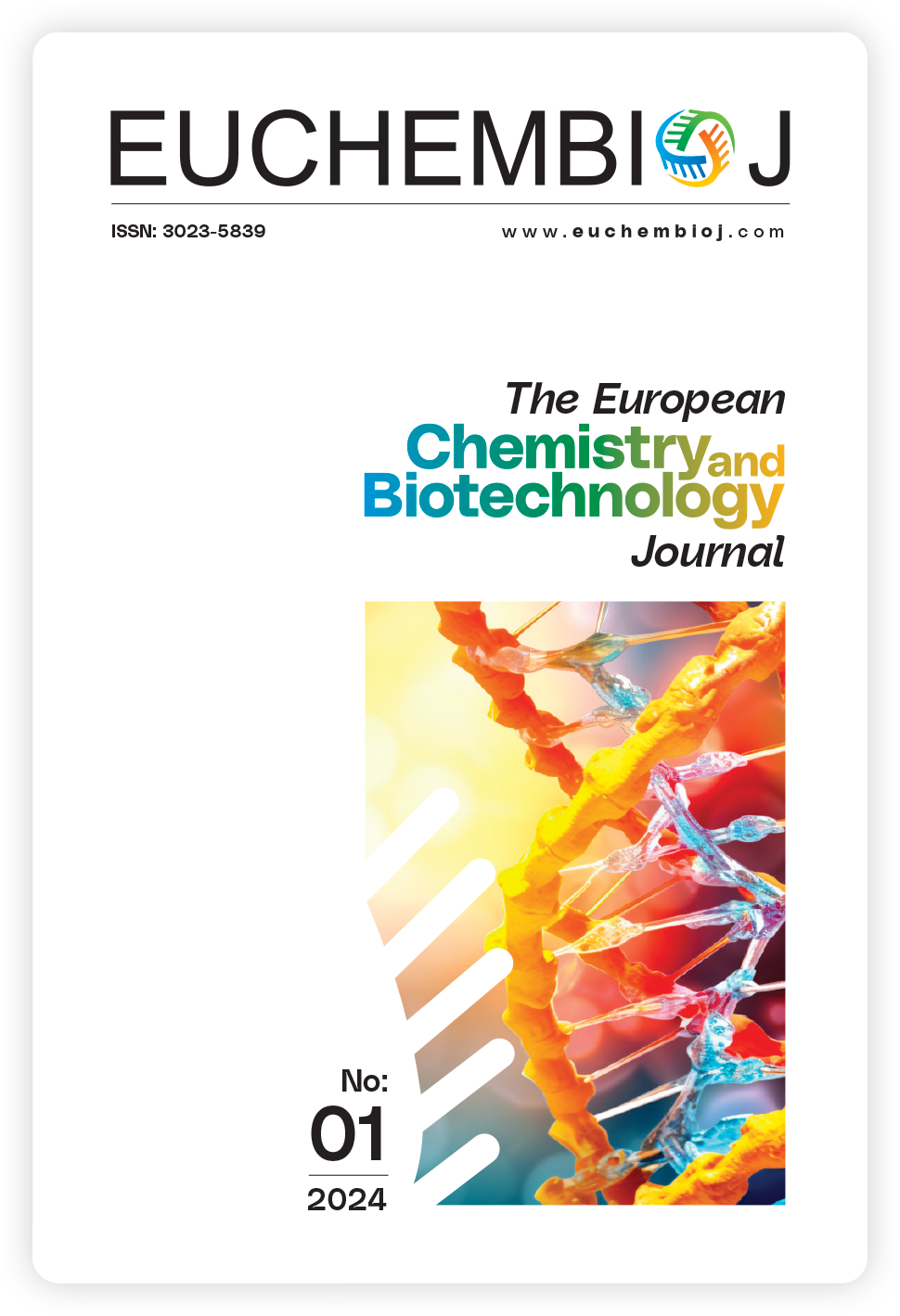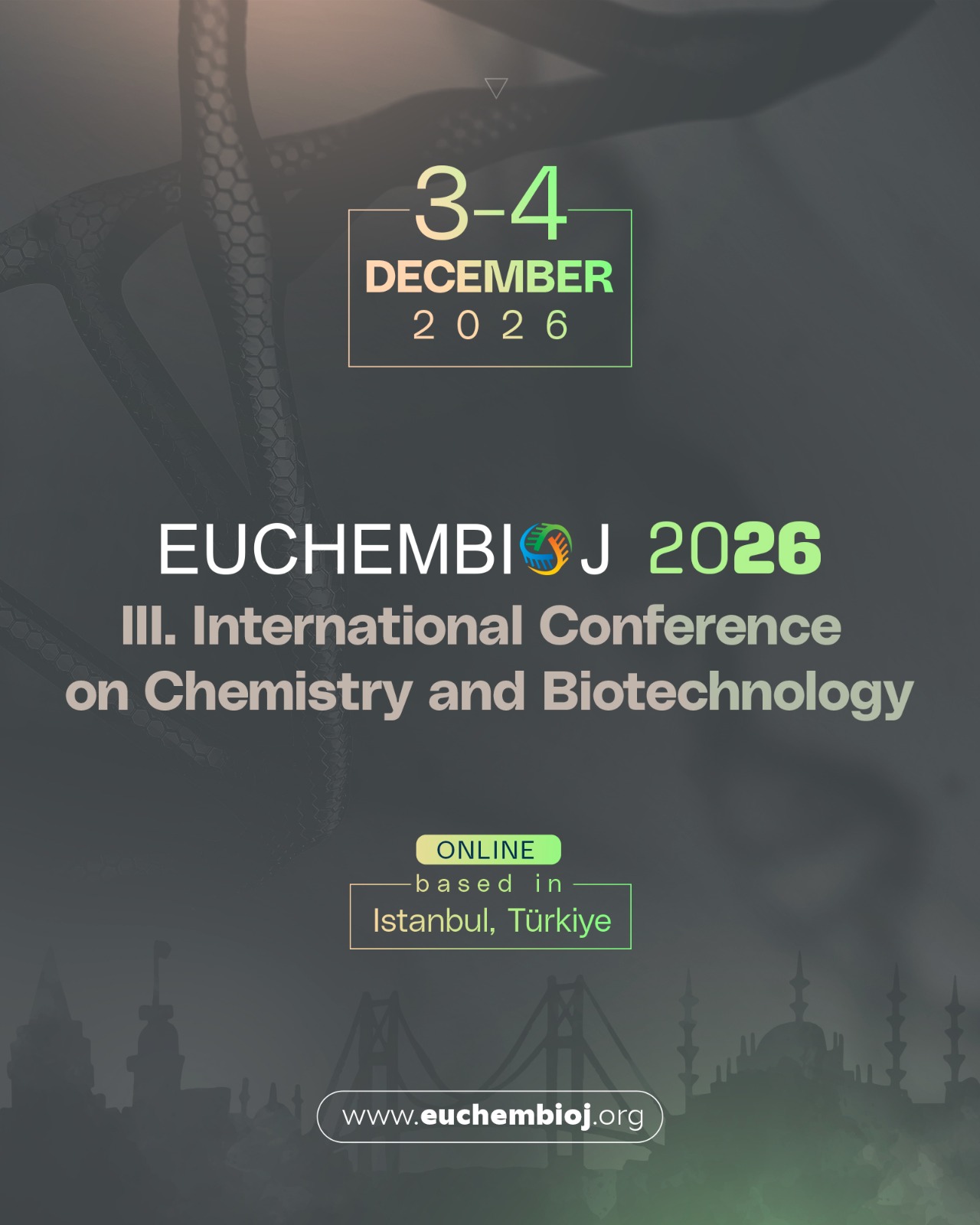Investigation of performance losses in microbial fuel cells with low platinum loadings on air-cathodes
DOI:
https://doi.org/10.62063/ecb-14Keywords:
Charge-Transfer Resistance, Diffusion Resistance, Electrochemical Impedance Spectroscopy, Microbial Fuel Cell, Platinum LoadingAbstract
The effect of platinum (Pt) loadings of air-cathodes in the 0-0.5 mg cm-2 range on single chamber microbial fuel cell (MFC) performance and cathode impedance was evaluated. In MFC tests, reducing benchmarking Pt loading of 0.5 mg cm-2 to 0.1-0 mg cm-2 decreased maximum power density by between 38% and 84%. The decrease in cathode open circuit potential with reduced loadings was small down to a catalyst loading of 0.03 mg cm-2, but was significant when the loading was further reduced to 0.01 or 0 mg cm-2. Impedance measurements of cathodes revealed that both charge-transfer and diffusion resistance increase with decreasing catalyst loadings on cathodes. Charge-transfer resistance of benchmarking cathode increased to a small extent when loadings were reduced to 0.1-0.03 mg cm-2. Below 0.03 mg cm-2, dramatic increase of charge-transfer resistance suggested that 0.03 mg cm-2 can be considered as the minimum Pt loading for which kinetic limitations are not of great concern and can be overcome to a large extent compared to lower loadings. In comparison to charge-transfer resistance, diffusion resistance differed more significantly between the loadings of 0.03 and 0.5 mg cm-2; and it was therefore the main component that changed the internal resistance of these cathodes.
References
Ayyaru, S., Mahalingam, S., & Ahn, Y.H. (2019). A non-noble V2O5 nanorods as an alternative cathode catalyst for microbial fuel cell applications. International journal of hydrogen energy, 44, 4974. https://doi.org/10.1016/j.ijhydene.2019.01.021 DOI: https://doi.org/10.1016/j.ijhydene.2019.01.021
Cheng, S., Liu, H., & Logan, B.E. (2006). Power densities using different cathode catalysts (Pt and CoTMPP) and polymer binders (nafion and PTFE) in single chamber microbial fuel cells. Environmental science & technology, 40(1), 364-369. https://doi.org/10.1021/es0512071 DOI: https://doi.org/10.1021/es0512071
Cheng, S., Liu, H., & Logan, B.E. (2006). Increased performance of single-chamber microbial fuel cells using an improved cathode structure. Electrochemistry communications, 8, 489-494. https://doi.org/10.1016/j.elecom.2006.01.010 DOI: https://doi.org/10.1016/j.elecom.2006.01.010
Dominguez-Benetton, X., Sevda, S., Vanbroekhoven, K., & Pant, D. (2012). The Accurate Use of Impedance Analysis for the Study of Microbial Electrochemical Systems. Chemical Society reviews, 41(21), 7228-7246. https://doi.org/10.1039/c2cs35026b. DOI: https://doi.org/10.1039/c2cs35026b
Feng, L., Chen, Y., & Chen, L. (2011). Easy-to-Operate and Low-Temperature Synthesis of Gram-Scale Nitrogen-Doped Graphene and Its Application as Cathode Catalyst in Microbial Fuel Cells. ACS nano, 5(12), 9611-9618. https://doi.org/10.1021/nn202906f DOI: https://doi.org/10.1021/nn202906f
HaoYu, E., Cheng, S., Scott, K., & Logan, B. (2007). Microbial fuel cell performance with non-Pt cathode catalysts. Journal of power sources, 171, 275-281. https://doi.org/10.1016/j.jpowsour.2007.07.010 DOI: https://doi.org/10.1016/j.jpowsour.2007.07.010
Harnisch, F., Wirth, S., & Schröder, U. (2009). Effects of substrate and metabolite crossover on the cathodic oxygen reduction reaction in microbial fuel cells: Platinum vs. iron(II) phthalocyanine based electrodes. Electrochemistry communications, 11, 2253-2256. https://doi.org/10.1016/j.elecom.2009.10.002 DOI: https://doi.org/10.1016/j.elecom.2009.10.002
He, Z., & Mansfeld, F. (2009). Exploring the use of electrochemical impedance spectroscopy (EIS) in microbial fuel cell studies. Energy & environmental science, 2, 215-219. https://doi.org/10.1039/B814914C DOI: https://doi.org/10.1039/B814914C
Kumar, S., Malyan, S., & Bishnoi, N. (2017). Performance of buffered ferric chloride as terminal electron acceptor in dual chamber microbial fuel cell. Journal of environmental chemical engineering, 5, 1238-1243. https://doi.org/10.1016/j.jece.2017.02.010 DOI: https://doi.org/10.1016/j.jece.2017.02.010
Lim, J.W., Cho, Y.H., Ahn, M., Chung, D.Y., Cho, Y.H., Jung, N., Kang, Y.S., Kim, O.H., Lee, M.J., Kim, M., & Sung, Y.E. (2012). Ionic resistance of a cathode catalyst layer with various thicknesses by electrochemical impedance spectroscopy for PEMFC. Journal of the electrochemical society, 159, B378. https://doi.org/10.1149/2.030204jes DOI: https://doi.org/10.1149/2.030204jes
Lima, F.H.B., Zhang, J., Shao, M.H., Sasaki, K., Vukmirovic, M.B., Ticianelli, E.A., & Adzic, R.R. (2007). Catalytic Activity−d-Band Center Correlation for the O2 Reduction Reaction on Platinum in Alkaline Solutions. The Journal of physical chemistry C, 111, 404-410. https://doi.org/10.1021/jp065181r DOI: https://doi.org/10.1021/jp065181r
Liu, H., & Logan, B.E. (2004). Electricity Generation Using an Air-Cathode Single Chamber Microbial Fuel Cell in the Presence and Absence of a Proton Exchange Membrane. Environmental science & technology, 38(14), 4040-4046. https://doi.org/10.1021/es0499344 DOI: https://doi.org/10.1021/es0499344
Liu, H., Cheng, S., & Logan, B.E. (2005) Production of Electricity from Acetate or Butyrate Using a Single-Chamber Microbial Fuel Cell. Environmental science & technology, 39(2), 658-662. https://doi.org/10.1021/es048927c DOI: https://doi.org/10.1021/es048927c
Liu, Q., Zhou, Y., Chen, S., Wang, Z., Hou, H., & Zhao, F. (2015). Cellulose-derived nitrogen and phosphorus dual-doped carbon as high performance oxygen reduction catalyst in microbial fuel cell. Journal of power sources, 273, 1189-1193. https://doi.org/10.1016/j.jpowsour.2014.09.102 DOI: https://doi.org/10.1016/j.jpowsour.2014.09.102
Logan, B.E., & Regan, J.M. (2006). Microbial Fuel Cells—Challenges and Applications. Environmental science & technology, 40, 5172-5180. https://doi.org/10.1021/es0627592 DOI: https://doi.org/10.1021/es0627592
Lovley, D.R., & Phillips, E.J. (1988). Novel Mode of Microbial Energy Metabolism: Organic Carbon Oxidation Coupled to Dissimilatory Reduction of Iron or Manganese. Applied and environmental microbiology, 54(6), 1472-1480. https://doi.org/10.1128/aem.54.6.1472-1480.1988 DOI: https://doi.org/10.1128/aem.54.6.1472-1480.1988
Lu, G., Zhu, Y., Lu, L., Xu, K., Wang, H., Jin, Y., Jason-Ren, Z., Liu, Z., & Zhang, W. (2016). Iron-rich nanoparticle encapsulated, nitrogen doped porous carbon materials as efficient cathode electrocatalyst for microbial fuel cells. Journal of power sources, 315, 302. https://doi.org/10.1016/j.jpowsour.2016.03.028 DOI: https://doi.org/10.1016/j.jpowsour.2016.03.028
Majidi, M.R., Shahbazi, F., Hosseini, M., & Ahadzadeh, I. (2019). Low-cost nanowired α-MnO2/C as an ORR catalyst in air-cathode microbial fuel cell. Bioelectrochemistry (Amsterdam, Netherlands), 125, 38-45. https://doi.org/10.1016/j.bioelechem.2018.09.004 DOI: https://doi.org/10.1016/j.bioelechem.2018.09.004
Mateo, S., Fernandez-Morales, F.J., Cañizares, P., & Rodrigo, M.A. (2017). Influence of the cathode platinum loading and of the implementation of membranes on the performance of air-breathing microbial fuel cells. Electrocatalysis, 8, 442-449. https://doi.org/10.1007/s12678-017-0393-7 DOI: https://doi.org/10.1007/s12678-017-0393-7
Oh, S., Min, B., & Logan, B.E. (2004). Cathode Performance as a Factor in Electricity Generation in Microbial Fuel Cells. Environmental science & technology, 38(18), 4900-4904. https://doi.org/10.1021/es049422p DOI: https://doi.org/10.1021/es049422p
Reimer, U., Lehnert, W., Holade, Y., & Kokoh, B. (2008). in Fuel Cells and Hydrogen- From Fundamentals to Applied Reserach (Eds. V. Hacker, S. Mitsushima), Elsevier, Amsterdam, Netherlands, pp. 15.
Rismani-Yazdi, H., Carver, S.M., Christy, A.D., & Tuovinen, O.H. (2008). Cathodic limitations in microbial fuel cells: An overview. Journal of power sources, 180, 683-694. https://doi.org/10.1016/j.jpowsour.2008.02.074 DOI: https://doi.org/10.1016/j.jpowsour.2008.02.074
Rittmann, B.E., Torres, C.I., & Marcus, A.K. (2008). Understanding the distinguishing features of a microbial fuel cell as a biomass-based renewable energy technology. Emerging Environmental Technologies, ed. by V Shah, Springer Netherlands, Dordrecht, pp. 1-28. DOI: https://doi.org/10.1007/978-1-4020-8786-8_1
Rossi, R., Cario, B.P., Santoro, C., Yang, .W, Saikaly, P.E., & Logan, B.E. (2019). Evaluation of electrode and solution area-based resistances enables quantitative comparisons of factors impacting microbial fuel cell performance. Environmental science & technology, 53(7), 3977-3986. https://doi.org/10.1021/acs.est.8b06004 DOI: https://doi.org/10.1021/acs.est.8b06004
Rozendal, R.A., Hamelers, H.V., Rabaey, K., Keller, J., & Buisman, C.J. (2008). Towards practical implementation of bioelectrochemical wastewater treatment. Trends in biotechnology, 26(8), 450-459. https://doi.org/10.1016/j.tibtech.2008.04.008 DOI: https://doi.org/10.1016/j.tibtech.2008.04.008
Santoro, C., Li, B., Cristiani, P., & Squadrito, G. (2013). Power generation of microbial fuel cells (MFCs) with low cathodic platinum loading. International journal of hydrogen energy, 38, 692-700. https://doi.org/10.1016/j.ijhydene.2012.05.104 DOI: https://doi.org/10.1016/j.ijhydene.2012.05.104
Song, J.M., Cha, S.Y., & Lee, W.M. (2001). Optimal composition of polymer electrolyte fuel cell electrodes determined by the AC impedance method. Journal of power sources, 94, 78-84. https://doi.org/10.1016/S0378-7753(00)00629-7 DOI: https://doi.org/10.1016/S0378-7753(00)00629-7
Springer, T., & Raistrick, I. (1989). Electrical Impedance of a Pore Wall for the Flooded‐Agglomerate Model of Porous Gas‐Diffusion Electrodes. Journal of the electrochemical society, 136, 1594. https://doi.org/10.1149/1.2096975 DOI: https://doi.org/10.1149/1.2096975
Tang, Y., Zhang, J., Song, C., Liu, H., Zhang, J., Wang, H., Mackinnon, S., Peckham, T., Li, J., McDermid, S., & Kozak, P. (2006). Temperature Dependent Performance and In Situ AC Impedance of High-Temperature PEM Fuel Cells Using the Nafion-112 Membrane. Journal of the electrochemical society, 153, A2036. https://doi.org/10.1149/1.2337008 DOI: https://doi.org/10.1149/1.2337008
Tang, X., & Ng, H.Y. (2017). Cobalt and nitrogen-doped carbon catalysts for enhanced oxygen reduction and power production in microbial fuel cells. Electrochimica acta, 247, 193-199. https://doi.org/10.1016/j.electacta.2017.06.120 DOI: https://doi.org/10.1016/j.electacta.2017.06.120
Ucar, D., Zhang, Y., & Angelidaki, I. (2017). An Overview of Electron Acceptors in Microbial Fuel Cells. Frontiers in microbiology, 8, 643. https://doi.org/10.3389/fmicb.2017.00643 DOI: https://doi.org/10.3389/fmicb.2017.00643
Wang, Z., Cao, C., Zheng, Y., Chen, S., & Zhao, F. (2014). Abiotic Oxygen Reduction Reaction Catalysts Used in Microbial Fuel Cells. ChemElectroChem, 1, 1813-1821. https://doi.org/10.1002/celc.201402093 DOI: https://doi.org/10.1002/celc.201402093
Watson, V.J., & Logan, B.E. (2011). Analysis of polarization methods for elimination of power overshoot in microbial fuel cells. Electrochemistry communications, 13, 54-56. https://doi.org/10.1016/j.elecom.2010.11.011 DOI: https://doi.org/10.1016/j.elecom.2010.11.011
Wei, L., Han, H., & Shen, J. (2012). Effects of cathodic electron acceptors and potassium ferricyanide concentrations on the performance of microbial fuel cell. International journal of hydrogen energy, 37, 12980-12986. https://doi.org/10.1016/j.ijhydene.2012.05.068 DOI: https://doi.org/10.1016/j.ijhydene.2012.05.068
Xia, X., Li, M., Liu, T., Liang, P., & Huang, X. (2018). Facile synthesis of cobalt oxide as electrocatalyst for the oxygen reduction reaction in microbial fuel cells. Chemical engineering journal, 342, 395-400. https://doi.org/10.1016/j.cej.2018.02.092 DOI: https://doi.org/10.1016/j.cej.2018.02.092
Yang, W., & Logan, B.E. (2016). Immobilization of a Metal–Nitrogen–Carbon Catalyst on Activated Carbon with Enhanced Cathode Performance in Microbial Fuel Cells. ChemSusChem, 9(16), 2226-2232. https://doi.org/10.1002/cssc.201600573 DOI: https://doi.org/10.1002/cssc.201600573
You, S., Zhao, Q., Zhang, J., Jiang, J., & Zhao, S. (2006). A microbial fuel cell using permanganate as the cathodic electron acceptor. Journal of power sources, 162(2), 1409-1415. https://doi.org/10.1016/j.jpowsour.2006.07.063 DOI: https://doi.org/10.1016/j.jpowsour.2006.07.063
Yuan, X., Wang, H., Colin-Sun, J., & Zhang, J. (2007). AC impedance technique in PEM fuel cell diagnosis—A review. International journal of hydrogen energy, 32, 4365-4380. https://doi.org/10.1016/j.ijhydene.2007.05.036 DOI: https://doi.org/10.1016/j.ijhydene.2007.05.036
Zhang, X., Cheng, S., Wang, X., Huang, X., & Logan, B.E. (2009). Separator characteristics for increasing performance of microbial fuel cells. Environmental science & technology, 43(21), 8456–8461. https://doi.org/10.1021/es901631p DOI: https://doi.org/10.1021/es901631p
Zhang, F., Pant, D., & Logan, B.E. (2011). Long-term performance of activated carbon air cathodes with different diffusion layer porosities in microbial fuel cells. Biosensors & bioelectronics, 30(1), 49–55. https://doi.org/10.1016/j.bios.2011.08.025 DOI: https://doi.org/10.1016/j.bios.2011.08.025
Published
How to Cite
Issue
Section
License

This work is licensed under a Creative Commons Attribution-NonCommercial 4.0 International License.








